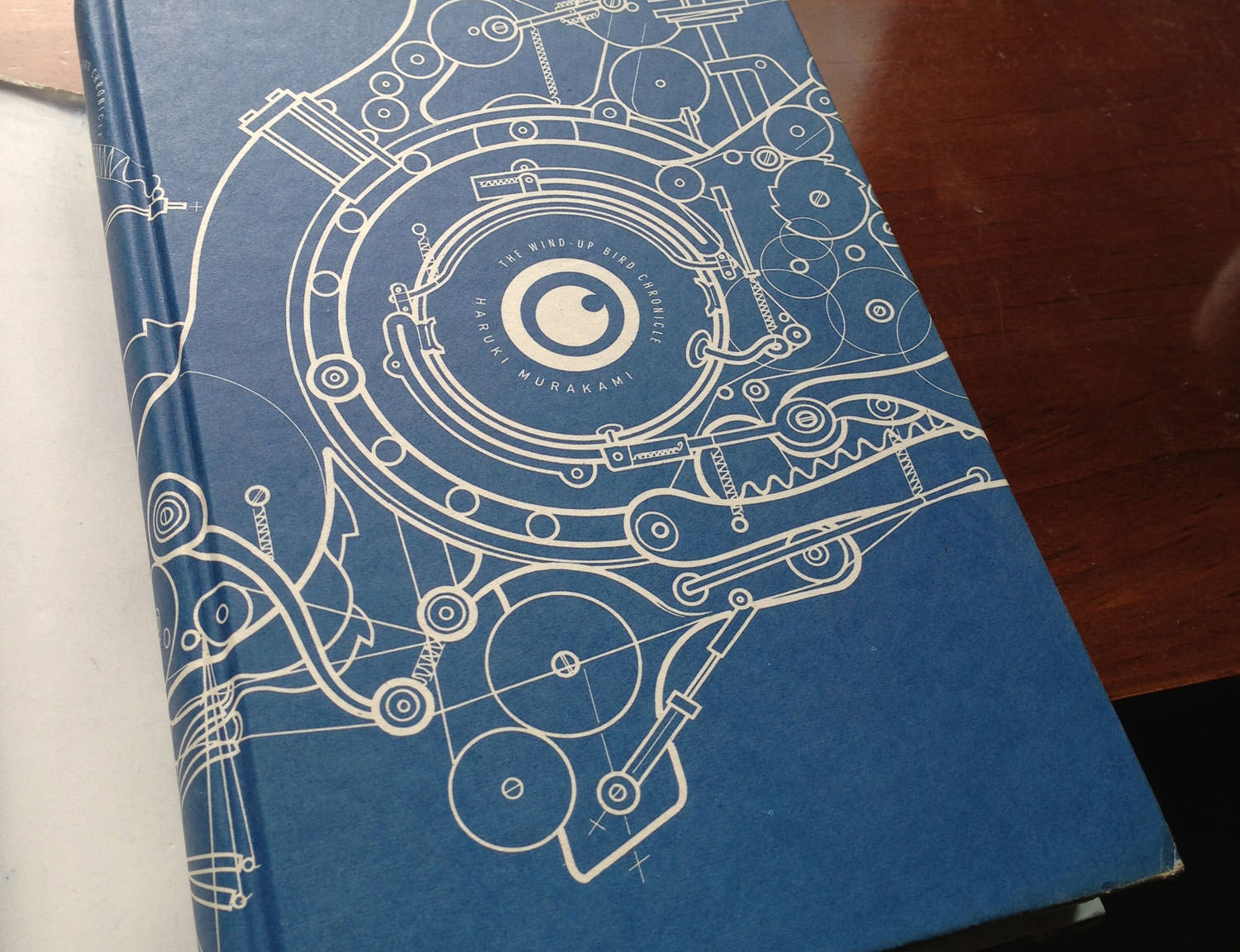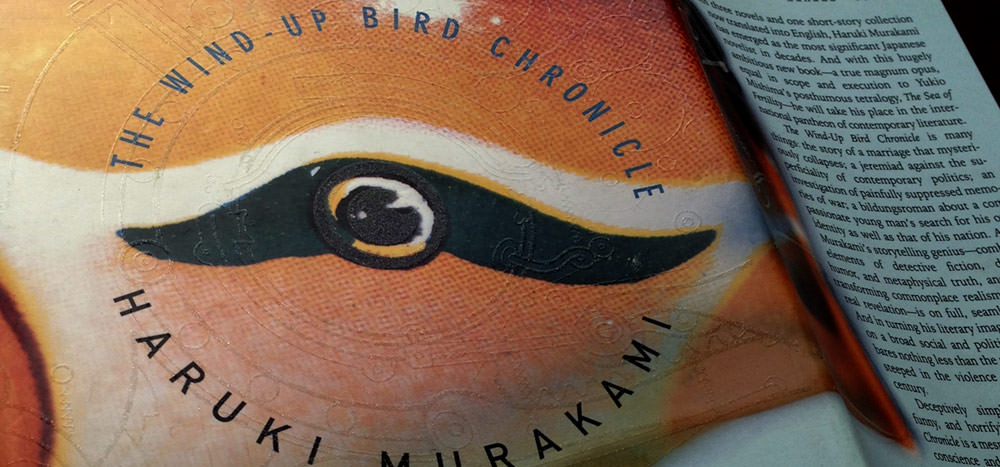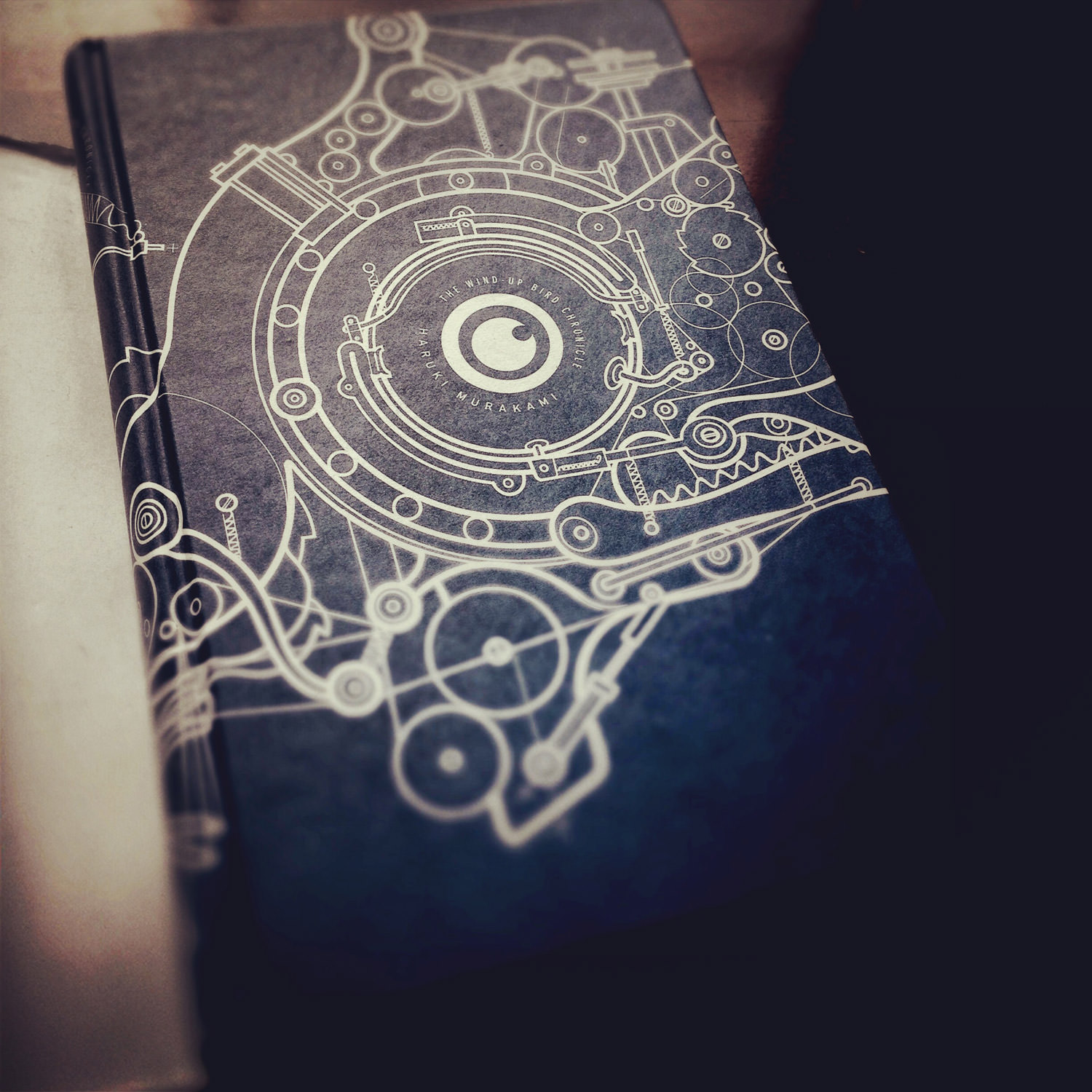
Wind Up Kidd Chronicle
To Murakami and Kidd and Ware
Originally published by: Virginia Quarterly ReviewI take them all off, the covers. As soon as I’ve paid — swoosh! Gone! I don’t have the heart to throw them in the garbage, but I certainly don’t let them muddle my hardcover books.
Contemporary covers can be rancid things, cheap paper littered with sales copy and discount stickers. They crumple, they tear, they smudge, they catch when you slip them into your bag. Embrace the serenity of coverless books and you can never go back. Without covers, hardcover books become confident blocks of wood — they don’t shimmy or slide in your hands or atop tables. Try it. You’ll love it. You’ll never go back.
So it’s a rare and wonderful thing to find a contemporary book wrapped in something I just can’t remove. Or, rather, wrapped in something I love to keep on, to remove, and then replace, again and again. This is the case with The Wind-Up Bird Chronicle, my favorite1 Haruki Murakami book. Designed by Chip Kidd, the cover contains only the barest of text: title and author’s name. No blurbs or quotes or synopsis. The surface of the entire cover, front to back, is a full-bleed photograph of an orange wind-up bird toy against a baby-blue background gradient. Geoff Spear photographed the toy so that most of it looms just out of focus. Only the bird’s eye — smack in the middle of the front cover — is sharp.

Despite such minimalism, the cover is alive. The circular path of the text, the positioning of the eye, and the sweeping patterns in the bird’s design pull your attention first to the center, then along the edge to the spine, inviting you to flip the book over and try to parse just what it is you’re looking at.
Now tilt the book: A translucent pattern shimmers across the surface. Look closer still and you’ll notice that it is, in fact, a mechanical schematic of the bird. Curious. Unwrap the cover and beneath it — printed in white ink on royal-blue chipboard — is a blueprint drawn by Chris Ware revealing the hidden complexities behind wind-up-bird mechanics.
Had they stopped here, Kidd and Ware and Spear could have claimed abject book-cover domination. But Ware goes one subtle step further. He renders the mechanics of the eye as a water well — an outer rim and an inner rim, abstracting the pupil into a perfect circle. The figure–ground relationship in this well illustration can be read in both directions: Either you’re at the bottom looking up and someone’s head is peeking over the top, or you’re at the top looking down, a small figure huddled against the well wall. Both are poignant to the story.

What a joy this cover is — its layers and materials, production techniques and texture and physicality, made for print and print alone. In my library, it’s one of the very few hardcover books that has survived my rule — take them all off. All except this one. Take it off, and then put it back on.
-
Upon further reflection, and given some time to steep, I’m not so certain this statement is true anymore. Once upon a time, WUBC was a favorite, maybe even the favorite Murakami book of mine. Now, if pressed to choose, I’m more inclined to point to something like Hardboiled Wonderland and the End of the World, if only because in hindsight, and with the last ten years of Murakami under our belts, it sits as an outlier, a curious aberration, one of the more playful flights of imagination to come out of the Murakami canon. WUBC is good but it’s more the archetypical codification of “classic” Murakami than it is, say, a cohesive and totally exceptional book (the original ending happens in the swimming pool a few hundred pages before the “real” ending in our current editions, but, as the story goes, Kodansha in Tokyo told Murakami he had to end it proper). All this is further compounded by the re-release and re-translation of Pinball 1973 and Hear the Wind Sing. You realize Murakami had been doing “classic” Murakami — the prototypical “boku,” twins, improbable loves, a translation / copy agency, music references, cooking, navel gazing in bars, broken hearts, etc — since day one. ↩︎
